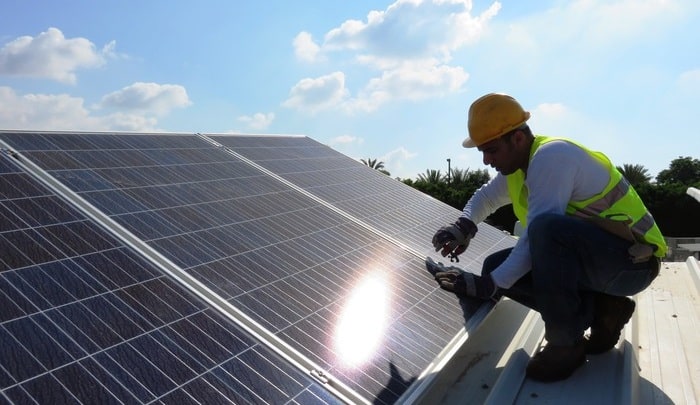JA Solar has supplied 43.8 MW bifacial double-glass modules for the 1st solar project that combines bifacial double-glass modules with trackers in Malaysia.
JA Solar has announced that it has supplied 43.8 MW bifacial double-glass modules for the first solar project that combines bifacial double-glass modules with trackers in Malaysia. The project is expected to generate 74 million kWh of electricity per year once entering operation.
Invested by Halpro Engineering, a joint venture between a German developer, EPC Greencells Group and their local partner Majulia, the project belongs to Malaysia’s second-round Large-Scale Solar (LSS) program. Combining high-efficiency bifacial cell technology with a strong double-glass structure, the bifacial double-glass module has the power of generating electricity from its backside, with a power rating that can reach more than 70 percent of that of the front side.
The module is capable to effectively improve the returns of investments by enhancing its power generation capacity, low irradiation performance and PID resist performance, even under harsh circumstances (such as desert, seaside, etc.) and extreme weather conditions (including high temperature, high humidity, etc.). Combining the high-efficiency module with the trackers, the project is expected to get even higher energy yield and more returns for the investor.
Jin Baofang, Chairman of the Board of Directors and CEO of JA Solar, said that “having established a manufacturing base in Malaysia in 2015 and supplied modules for several large-scale projects in the local market, JA Solar has been actively increasing its presence in promoting new technologies to help local customers reduce LCOE and raise customers’ returns. In the future, JA Solar will continue to promote the application of advanced technologies to push the development of the photovoltaic market in Malaysia and all other Southeast Asia countries.”
In June, we had reported that JA Solar had won the order to supply its Mono PERC MBB modules for Japan’s largest single photovoltaic (PV) project. The solar power plant will be having a capacity of 110 MW and located in Kansai, Japan.
Baofang had said at the time that “as a country with a mature PV industry, Japanese customers have higher requirements for the quality and efficiency of solar products. Over the past nine years, JA Solar’s products have maintained high recognition in the Japanese market, thanks to their superior quality and performance.”
The project is expected to connect to the grid by March 2022 and will generate 150 million kWh of electricity once operational. Also, it is likely to trim carbon dioxide emissions by 50,000 tons per year.





































